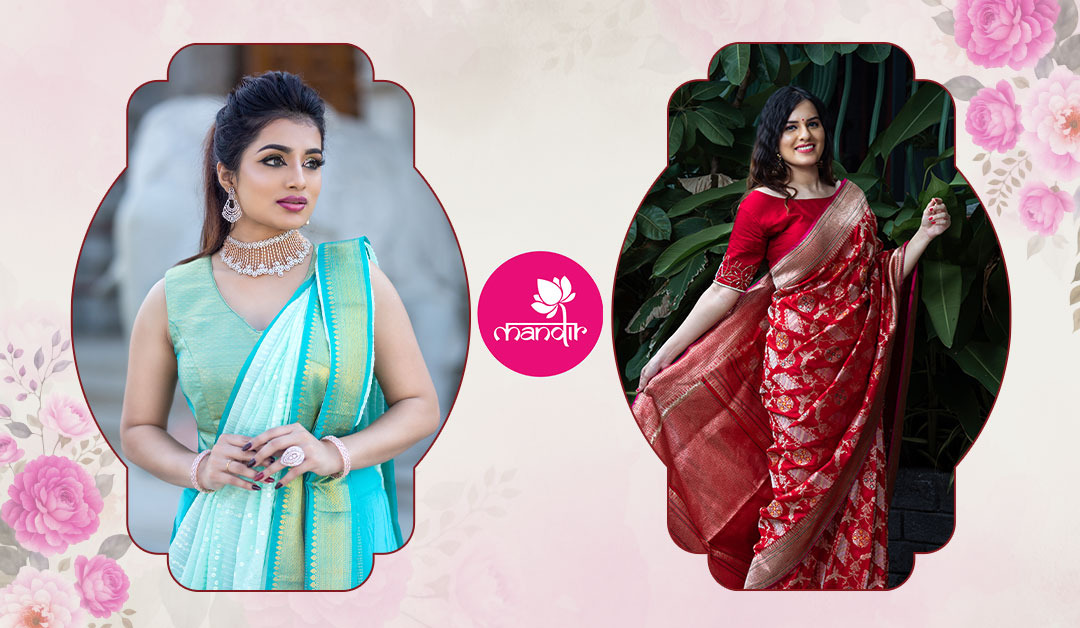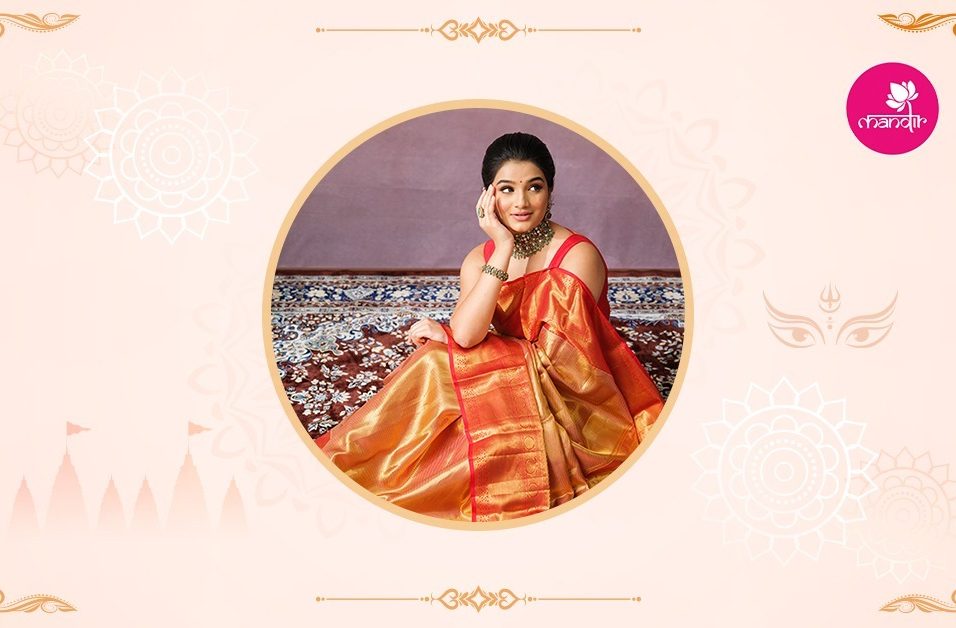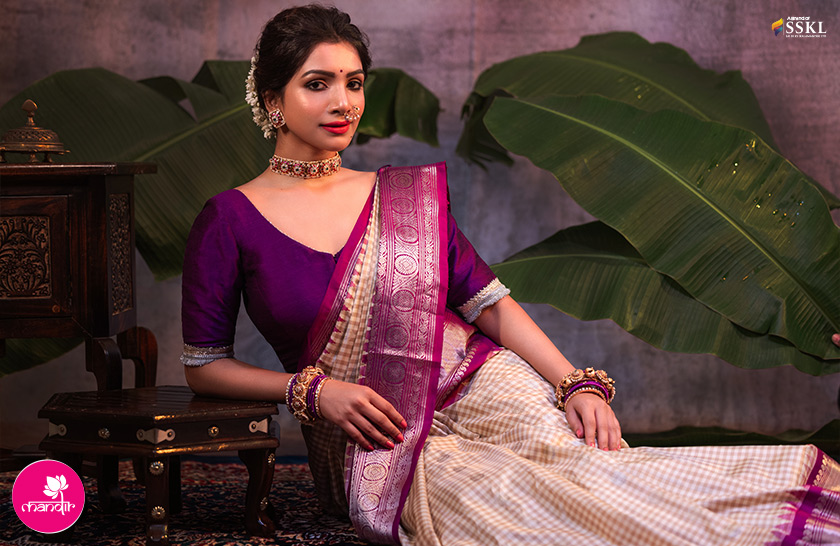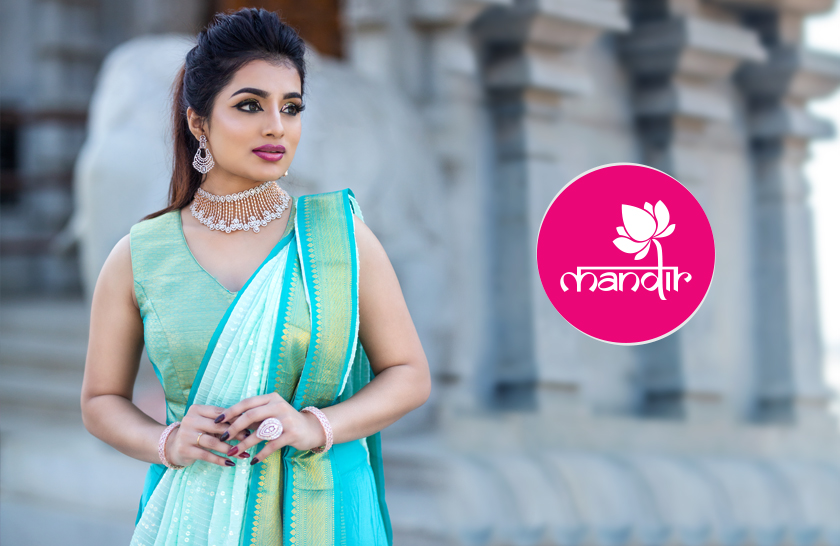Difference Between A Banarasi And A Kanjeevaram Saree
The Banarasi and Kanjeevaram sarees are two of the most well-known and admired silk sarees in India. While the Banarasi saree has its place of origin in Varanasi, Uttar Pradesh, the Kanjeevaram comes from Tamil Nadu, specifically the town of Kanchipuram. It is interesting to note that both the sarees carry the namesake of their place of origin, despite having vastly different histories.
A Banarasi or a Kanjeevaram saree is a beautiful addition to an Indian woman’s wardrobe. Saree lovers appreciate the uniqueness and grace of both of them individually and in this article, let us look at some of the key differences between them.
History of the Banarasi and Kanjeevaram Saree
Banarasi sarees first gained prominence during the 14th century whereas Kanjivaram sarees are said to have been around since the 7th century Pallava dynasty in the south.
While Banarasi sarees find some mention in our ancient scriptures, the mythology of the Kanjeevaram saree is far clearer, with it being called the work of the ‘Weaver of the Gods’- Sage Markandeya.
Differences in Design Between the Kanjeevaram and Banarasi sarees
- Due to the history of the art form, the Banarasi sarees prominently show designs with elements of Mughal and Persian culture. The floral motifs, the string of leaves patterned on the outer edges, the elaborate figurines and the meena work are very distinct characteristics of the Banarasi sarees.
- As for the Kanjeevaram sarees, they depict temple architecture, traditional Indian forms, nature and some of the motifs inspired by Indian mythology.
Weaving Techniques of the Kanjeevaram and Banarasi saree
- The making of a Banarasi saree usually involves three weavers working in tandem, on jacquard pit looms.
- A Kanjeevaram saree is made of pure mulberry silk. The body of the saree, the pallu and the border are woven separately and then joined together.
Some more key differences
- The Banarasi saree is usually heavier because of the detailed zari work.
- Tha Kanjeevaram sarees usually feature colours that heavily contrast with each other as compared to Banarasi sarees.
- The Banarasi saree is usually stiffer than the free-flowing Kanjeevaram drape.
The Cultural Significance of a Banarasi and Kanjeevaram saree
Banarasi and Kanjeevaram sarees are the first and most beautiful choice for Indian women, when it comes to selecting an auspicious attire for special occasions and festivals. The remarkable craftsmanship and radiance of the sarees places them on an equal footing. Additionally, both the sarees are favoured by brides for their stunning fabrics that add a touch of regality to any event.
What Should You Choose Between a Banarasi and Kanjeevaram saree?
If you prefer a heavier fabric with a focus on zari work, a Banarasi sarees grace and beauty is what you need. However, if you like a lighter drape with a more traditional design, the elegance of a Kanjeevaram saree is unmatched.
There are some ways for you to wear both sarees at once.
- Wearing a saree as a lehenga. This is a classic and when one saree is pleated around your waist like a lehenga, you can use the other one as the drape.
- Wearing one of the sarees as a long shawl on one side. Wear one of the sarees normally. Then pleat half of the other saree at your back and let the rest of it flow from your other shoulder.
There are many ways to mix and match these statement pieces from your wardrobe. At the end of the day, the beauty of Indian textiles is limitless and there is no limit to the style choices afforded by them.







Leave feedback about this